Call For Ethnographic Material on Mediterranean Diet For A Digital Repository
In 2013 the Mediterranean Diet was inscribed on UNESCO’s Representative List of Intangible Cultural Heritage of Humanity. This multinational inscription includes emblematic communities from Italy (Cilento), Spain (Soria), Morocco (Chefchaouen), Greece (Koroni), Portugal (Tavira), Cyprus (Agros) and Croatia (islands of Brač and Hvar).
Preservation of the Mediterranean Diet brings out a thousand-year-old interlaced history of this cultural space, often referred to as the “cradle of civilization.” The Mediterranean does not only represent a unique cultural space, but also an ancient intersection and junction of ideas and cultures of many nations. The Mediterranean Diet is not a typical list of ingredients and dishes – it is a particular lifestyle that fosters uttermost respect for food, where nothing is discarded and where the chores of cultivation and preparation are equally enjoyed as relishing the food.
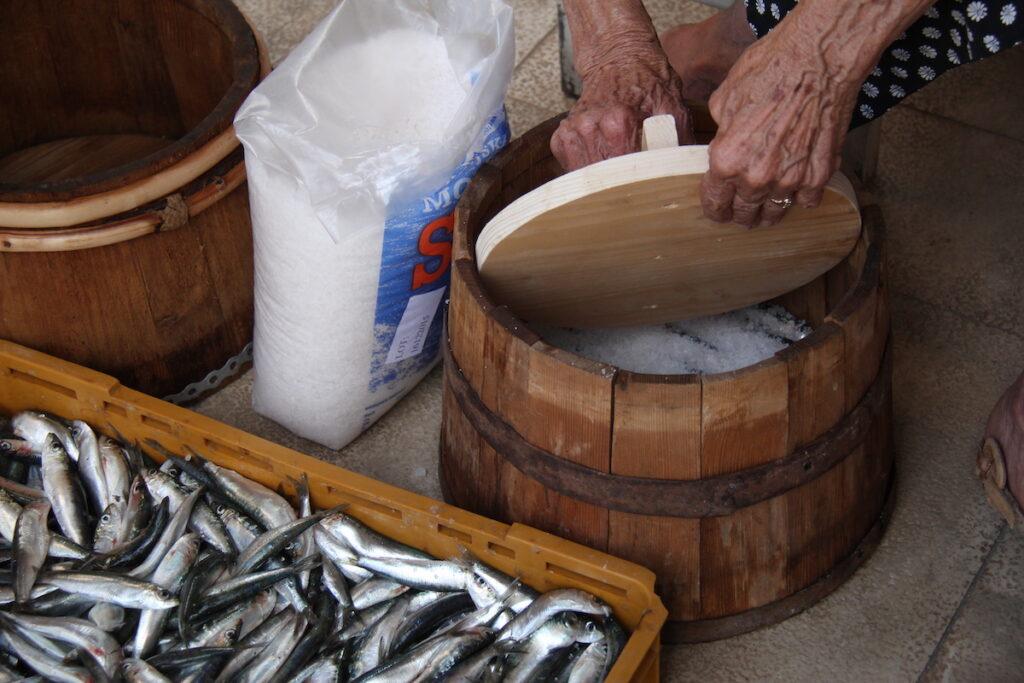
The culture of Mediterranean cuisine is predominantly local in terms of scope and oral in transmission. In the Mediterranean countries convivial meals represent a place for social exchange and transfer of ideas and knowledge, strengthening of communities and maintaining cultural identities.
Aiming to gather in one place as much ethnographic material collected during research of food practices of the Mediterranean space as possible, and taking into account new possibilities of digital technology, we are inviting experts and researchers to gather the relevant material which will be stored in The Mediterranean Diet Digital Collection.
The Collection is established in the Digital Repository of the Institute of Ethnology and Folklore Research (DIEF). The ethnographic material that will be accepted can be documented on different media (such as video, photo, audio, manuscripts), and it should contain knowledge, skills, and traditions in relation to cultivation, processing, preparation, and consumption of food in the Mediterranean, and with emphasis on emblematic communities.
Special emphasis is given to gathering of the material in emblematic communities constituting a network of countries inscribed on the Mediterranean Diet List by UNESCO.
Before sending your material please contact ivanisevic@ief.hr or melanija@ief.hr for the instructions how to prepare your materials.
You can check Institute’s digital collections at: https://repozitorij.dief.eu/a/
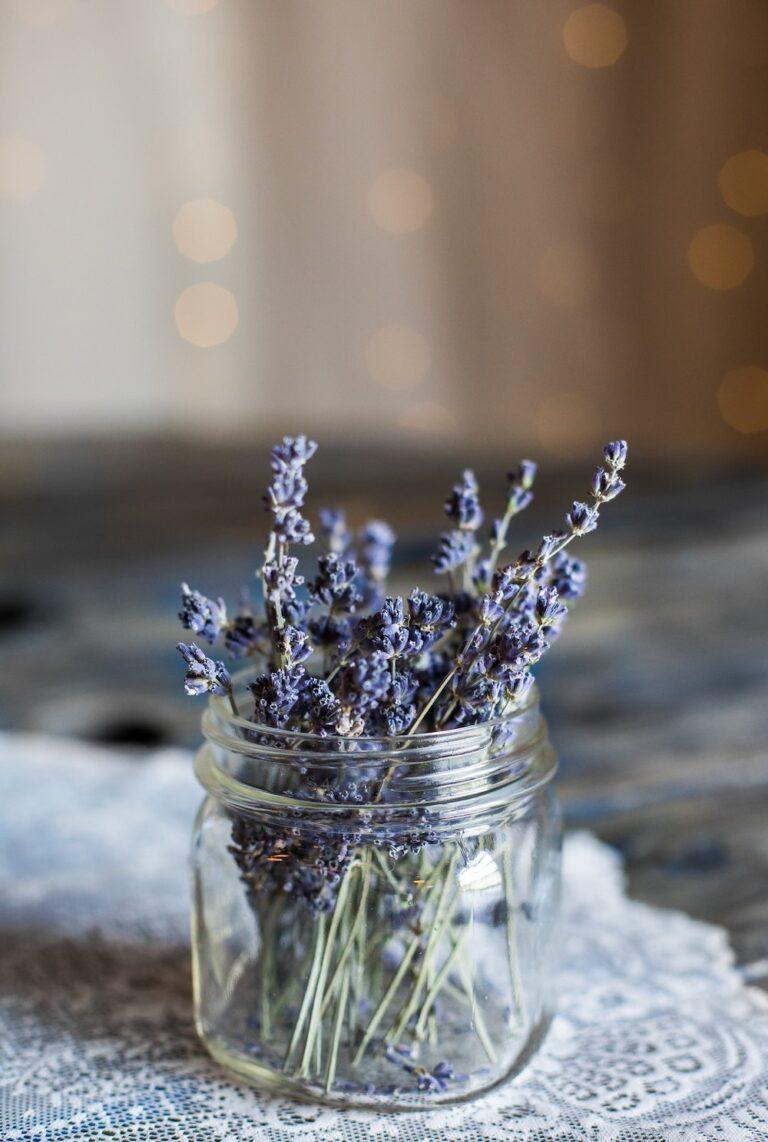
Lavender Festival - Velo Grablje, Hvar
The Lavender Festival in the small village of Velo Grablje on the island of Hvar is an event with several basic components, from educational and economic to tourist and cultural, all of which celebrate lavender.
Lavender is a plant that has a long tradition of cultivation and production on Hvar, which is known far and wide as the “island of lavender.”
Velo Grablje has a special role in this story. The Rosemary Cooperative was founded in Velo Grablje in 1892, the first of its kind on the island and in Croatia. In 1902 – 1903, members of the cooperative built a workshop for distillation with what was then the most modern equipment for the production of essential oils, “so that this year can be considered the beginning of the modern production of essential oils on the island of Hvar and in Croatia” (Devetak, 1977). The Rosemary Cooperative was later renamed the Agricultural Cooperative, but its tradition of cultivating and producing lavender has survived until today.
The years 1928 – 1930 were the beginning of the systematic planting and cultivation of lavender and the production of lavender oil in Velo Grablje. In the mid-twentieth century, Velo Grablje became the largest producer of lavender oil in Dalmatia, bringing great prosperity to the village.
The first person to grow lavender and produce lavender oil on Hvar was Barba Borte, Bartul Tomičić (1869 – 1953). Although at first he was the laughing stock among the villagers, who mocked him for planting “flowers” and “wild grass” and jokingly called him “lavender man,” his perseverance and vision were eventually followed by everyone and lavender started to be grown around the island. It must be emphasized that Velo Grablje also has its own authentic lavender variety, a hybrid called “Budrovka.”
Today, Velo Grablje is part of an ethno – eco village program under the protection of the Ministry of Culture of the Republic of Croatia. The village is approximately ten kilometers, by either the old road or the new road, from the town of Hvar, of which it is an administrative part. With other nearby villages it completes the surroundings of the town of Hvar, achieving a special rural atmosphere on this part of the island. The village dates back to the fifteenth century.
Archaeological and cultural – historic monuments dating from prehistory to modern times have been preserved here. The Church of St. Vid is a nicely preserved example of old Croatian architecture from the ninth to twelfth century and the parish church of St. Kuzma and Damjan was constructed in its present form in 1886 at the location of the old sixteenth century church. With beautiful wall paintings from 1913 – 1914, it is one of the most picturesque village churches in the Hvar parish.
The Pjover Society, which is trying to revive the village in a modern way, is responsible for protecting and revitalizing Velo Grablje. The Lavender Festival and the rich cultural – historical heritage of our ancestors confirm that we are on the right track.
The festival offers you all the best of the island of Hvar in one place and the lavender experience from Velo Grablje is certainly something you will always remember.
Exhibitors of Original Lavender Products
A basic feature of the festival is the exhibitors of lavender products from Hvar and beyond. You can purchase lavender oil, flowers and many other authentic products, like lavender, rosemary, sage and heather honey, a wide variety of brandies, soaps, perfumes, creams and lavender souvenir gifts. Of course, there are also lavender delicacies cakes, juices, event he unique lavender ice cream. You can also find other authentic products ranging from olive oil and authentic Hvar wines to hand-crafted works of art and souvenirs.
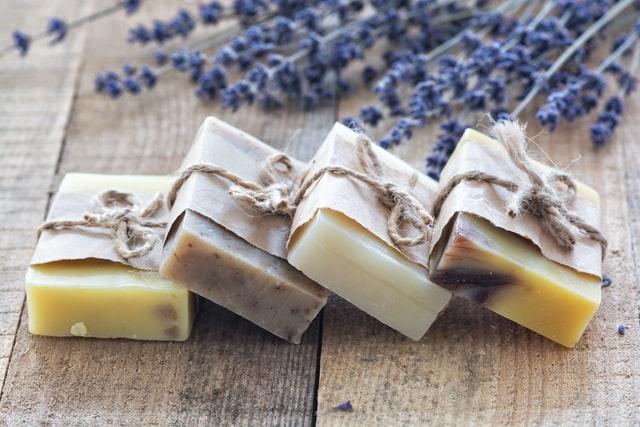
Lavender Oil Distillation
You can experience the traditional distillation of lavender and rosemary oil in the old distillery in the company of cheerful villagers. Besides watching the interesting process of distilling essential oil, you can also see the original still, the old cauldrons and other necessary tools. The Velo Grablje distillery is one of the last places where you can still feel the scent of Hvar as it used to be.
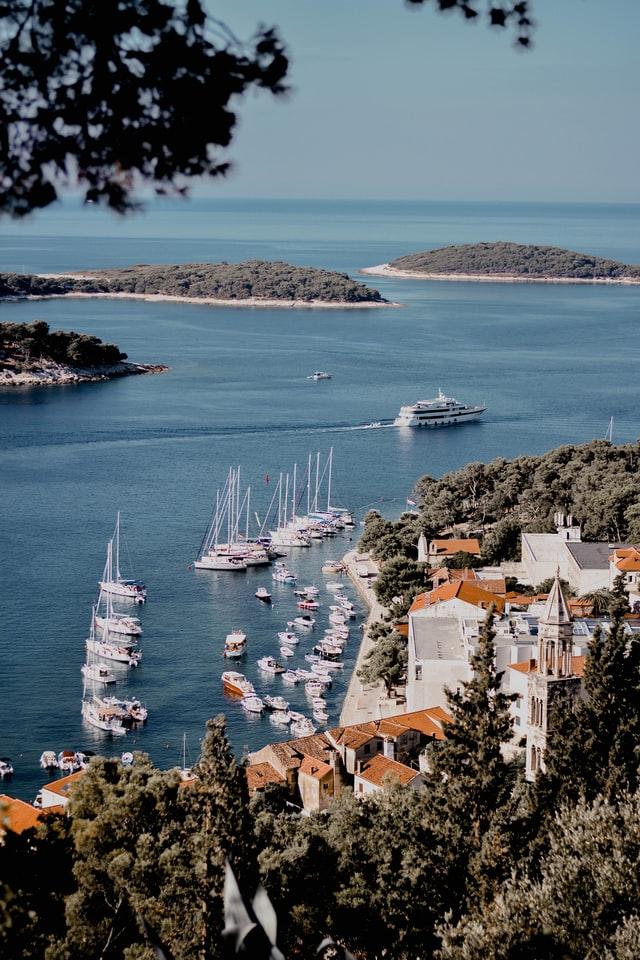
Harvest - Picking Season
Depending on lavender yield and climate conditions, the lavender harvest, or as the villagers like to call it, “the picking”, begins approximately at the same time as the festival, i.e. in late June. The lavender harvest is frequently organized in the fields around Velo Grablje. The villagers demonstrate the harvesting process and the old techniques, which are slowly diasppearing in the face of modern technology. In addition to this unforgettable experience, every visitor takes away a fresh bouquet of aromatic lavender.
The old tools once used to harvest lavender are displaye din the village and an ethno collection containing all the ancient tools required for survival in the Dalmatian Karst will soon be open
Education - Seminars - Lectures
The lectures of eminent lavender and other aromatic and medicinal herb experts are intended to educate the producers and visitors to the festival. The lectures will be given by experts from around Croatia and the topics will cover both the traditional and the unavoidable future, new technology, analysis and research.
Culture
Culture is an important component of the festival, during which all artists and cultural – social organizations on the island of Hvar gather in one place to offer visitors their latest exhibitions, projections, shows and performances. Everything takes place in the natural surrounding of the Velo Grablje theatre, giving the performances special charm.
As a society, we cooperate with all other groups on Hvar, sharing the cultural diversity and wealth of our island. We must also mention Poetry Night, which is attended by our island poets and also by the best contemporary Croatian authors.
Workshops
Workshops also fall within the scope of the educational part of the program. Every year we organize creative drawing workshops for children held by visual artists. The V. Božitković kindergarten from Hvar and the Hvar elementary school participate in the project. The more “experienced” visitors may attend a workshop for drywall, a traditional construction technique that uses stone without any mortar, emphasizing the rich culture and hard painstaking work of our farmers. Velo Grablje and its surrounding area provide excellent examples of drywall construction.
Other workshops that we would also like to mention include baking bread in a bread oven, flower creations and a soap making workshop.
Gastronomy
The gastronomic corner also has a special offer for visitors, including a diverse array of home-made dishes in a setting in which food, complete with the scent of aromatic herbs, becomes a true pleasure. The menu ranges from meat to fish specialties, the best spices, wines and olive oil from the island of Hvar. The festival bar, “Caffe do Brasil,” is symbolically named after the old hemp bags that were originally used to transport coffee, but which were converted by our ancestors to use for lavender. In addition to the usual drinks, the bar has plant-based juices made from lavender, blackberry and elderberry.
Concert
The festival ends with a concert in which we give young musicians from Hvar a chance to play as supporting acts to renowned Croatian bands. We are trying to provide good entertainment for all our visitors with quality and good selection of performers, klapa (harmony singing group) and town brass bands, performing Dalmatian music.
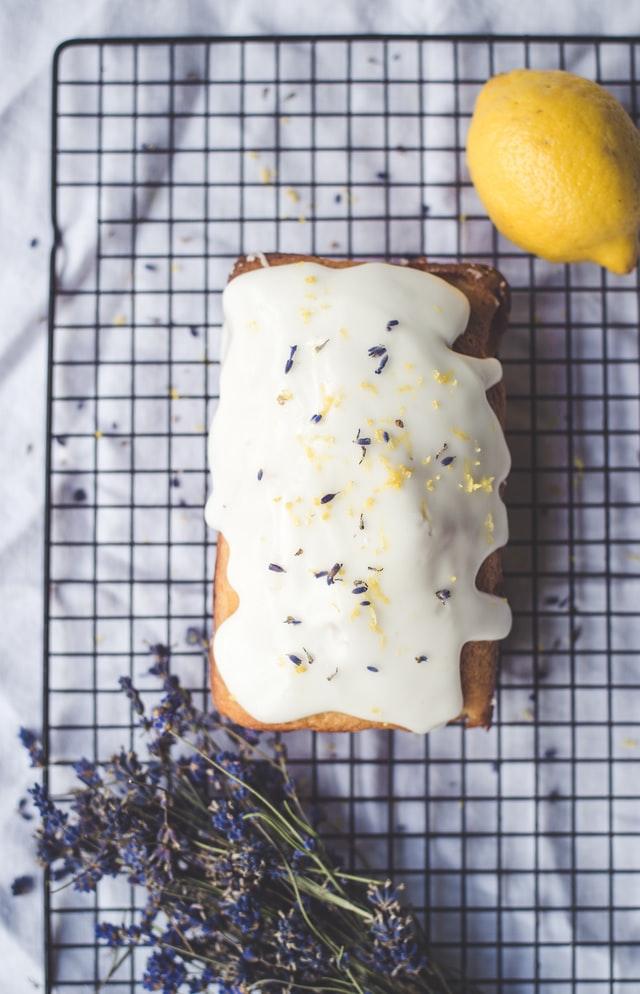
Interesting Facts
The largest manufacturer of lavender oil in mid 60s was Lorenco Tudor, who was named the “Kinf of Lavender” by British journalists.
Although Velo Grablje is now abandoned, it still has active football and bowling clubs named Lavender that have achieved exceptional sports results. The villagers always set aside part of the oil from lavender distillation for the needs of their clubs. The sports part of the story of Velo Grablje is interesting in itself.
A lady whose middle name is Lavender lives in Velo Grablje. What is interesting is that her mother gave birth to her in the field during harvest. This is the best example of the painstaking life of our ancestors and the effort they made so we could enjoy all the things we have today.
The island of Hvar boasts its own superhero, Lavenderman, the subject of a comic book and a movie who is endowed with unusual skills, like fighting moths.
NAMES Cultural Festival
Starting in 2010, the NAMES Association began organizing the annual NAMES cultural festival in Bol on the island of Brač every June, right at the beginning of summer. It is a multimedia festival that promotes Bol as a place of good taste and aesthetic pleasure. The NAMES Association was founded with the goal of promoting culture and cultural heritage in Croatia and in the world.

In the morning at the local farmers’ market the Pregnant Pot Bol Brunch event is held, and in the evening there are book promotions, art exhibitions in the Dešković Gallery and the Wine Cellar as well as classical music and jazz concerts, which all contribute to the experience of looking and listening.
At the Bol Brunch event – the popular Pregnant Pot – both Brač residents and tourists enjoy dishes from local Bol taverns and restaurants along with a glass of wine and good vibrations while celebrating local food and playing traditional bingo, Brač style. The aim of the project is to revitalize the traditional southern marenda (brunch), once a symbol of Dalmatian cuisine. The marenda isn’t fast food, slow food, or a fancy composition of foods on a plate – it’s simply normal, authentic food, often some type of stew with elements of local and seasonal cuisine.
With this project we are highlighting the importance of gastro-heritage as an expression as well as the culture of living in local places, which has great importance for the positioning of Croatia in the market of sustainable and authentic tourism.
Prompted by the success of the project, in 2015 the NAMES Association published the book “Brač Marenda Through the Years” in both Croatian and English. The book achieved international success and was a finalist in the Gourmand World Cookbook Awards in Yantai (China) the same year.
Bol has a rich history when it comes to seafood and viticulture. In 1929, Ante Viličić of Bol used the first net for catching tuna in the world. In 1903, the first Dalmatian Wine Association was founded in Bol. By 1909, they had won their first gold medal at the International Wine Awards in Paris and 100 years later, in 2009, Stina Winery, honoring their heritage and believing in their future, began producing four types of excellent wine in their remodeled wine cellar: Pošip, Plavac mali, Vugava i Opol. Today Stina is a famous wine brand from the island of Brač. They are reviving old vineyards and planting new ones while preserving the traditional method of cultivation without using metal frames, and all care and harvesting is done exclusively by hand.
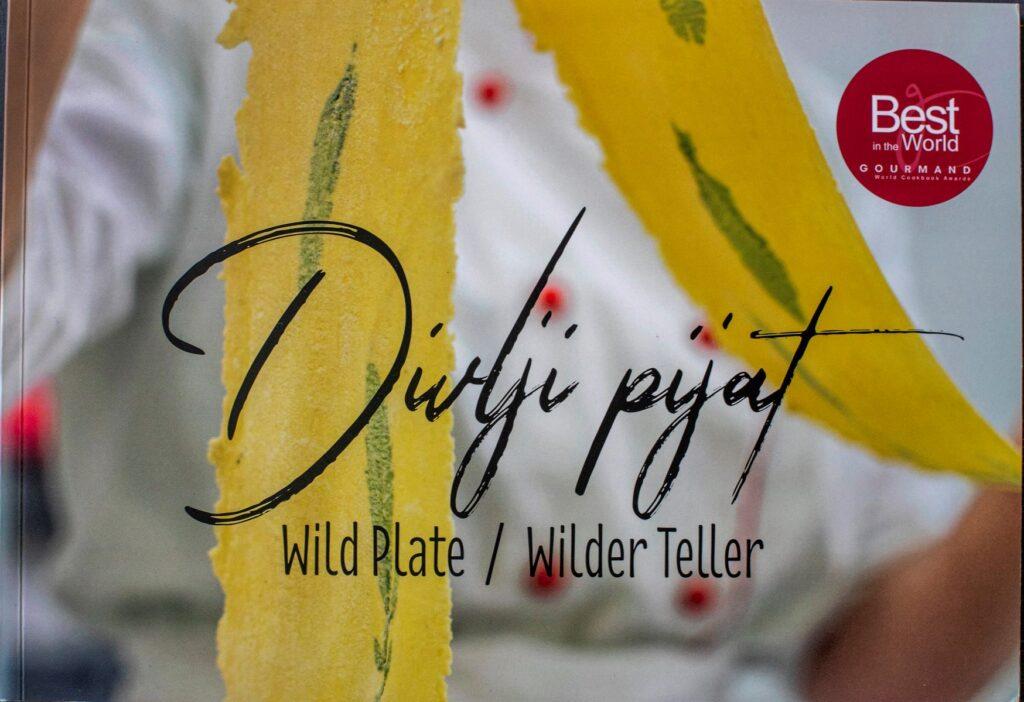
In the known “trefoil” of fish, olive oil, and wine – one additional element is important for the southern side of Brač. And that is space, a limited resource which we should perceive as a part of heritage. Passed on from previous generations to care for – there is more and more awareness of its value. With this in mind – Bol High School realized the project “Wild Plate” in cooperation with the NAMES Association. The project focused on edible plants that are native to the island of Brač, more commonly known as mixed greens.
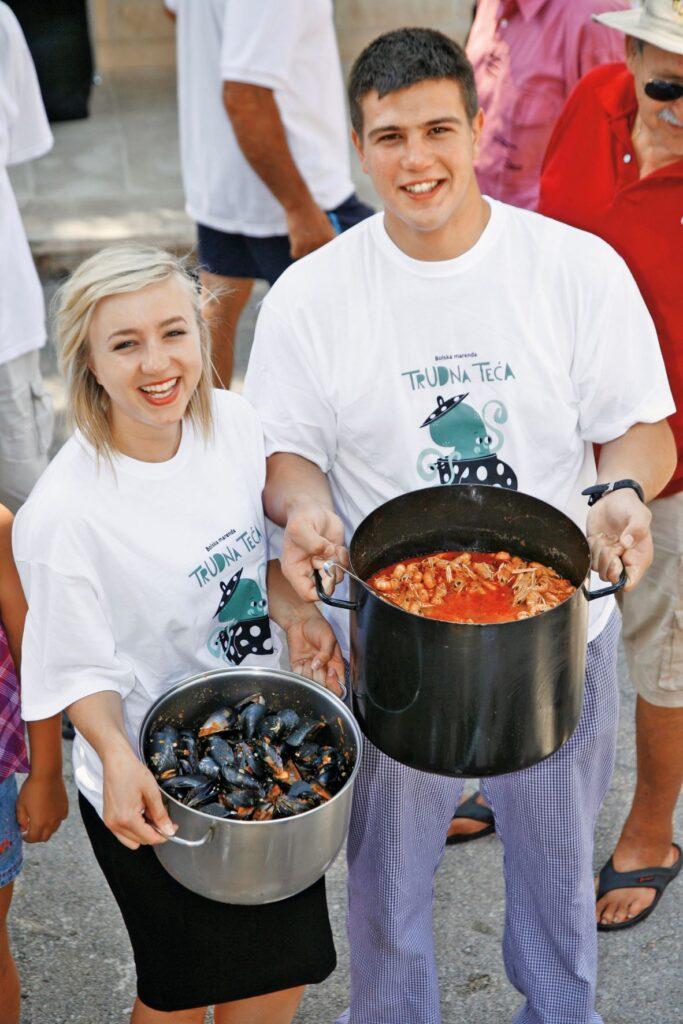
The project was composed of multiple parts: field and culinary workshops, the “Wild Plate” party and the publishing of a book about it all with the goal of popularizing those well known and yet also neglected plants. The book promotion was held in September 2019 in the Wine Cellar on World Tourism Day. The book is in three languages (Croatian, English and German) and in November 2021 a second edition was printed. The publisher, Bol High School, proudly highlighted the award the book received at the Gourmand World Cookbook Awards.
In the “composite” of the elements of sea, air, and food that always awaken a positive curiosity, “dolce far niente” and an easygoing state of mind create a kind of pleasantness which quietly but surely helps people feel content and thus improves their experience. This holds true for residents and the innumerable tourists just passing through. Believing in the value of heritage and its reinterpretation in line with world trends and acquired knowledge and in the necessity of partnerships between institutions and civil society, which the European Union advocates, with our “Pregnant Pot” and “Wild Plate” projects we proudly emphasize our place in the Mediterranean cultural tradition and point out the fact that our island Brač is included on the UNESCO list of Intangible Cultural Heritages of Humanity.
Maja Duka, Founder and President of the NAMES Association and author of the Pregnant Pot and Wild Plate projects.
